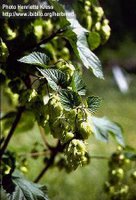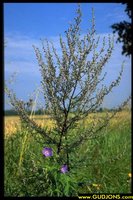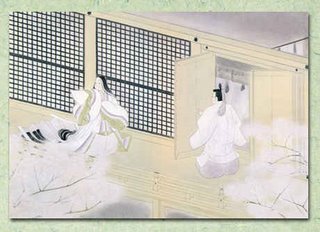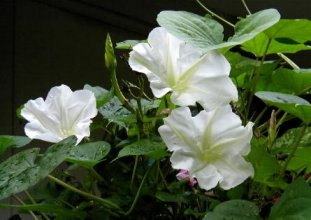Chapter 11: Hanachirusato
Falling Flowers For such a short chapter three things coming up: The Laurel tree, the cuckoo bird and the orange tree. This chapter is the calm before the storm sorta speak. He has fallen from the grace of the Empress Mother, hence the title.

Laurel tree: The name is said to be connected with the Latin word laus, "praise”
Fables: Apollo having slain the Python, the ancient serpent, formed from the slime left after Deucalion's flood, fled for purification to the laurel-groves of the vale of Tempe. Here he became enamored of the nymph Daphne, the daughter of the river Peneus, and on his pursuing her she took refuge in her paternal stream, and was metamorphosed into a laurel. Apollo, returning to Delphi, instituted the Pythian games to commemorate his victory, and the prizes there awarded were chiefly crowns of the leaves and berries of the shrub, which henceforth was looked upon as sacred to the god--the Laurea Delphica, or Apollinaris. Apollo being the god of poetry, his emblem, that of victory and clemency, became the favourite of the poets, and hence of scholars generally, so that successful graduates of universities or other learned men became known as "laureates," or "baccalaurei," from the berried crown. Such graduates, like the fellows of colleges down to our own time, were not allowed to marry, lest the duties of husband and father should take them from their literary pursuits, and hence the term "bachelor" became extended to unmarried men in general.
The Laurel was also believed to be a protection against lightning; and accordingly, the Emperor Tiberius, when it thundered, wore a laurel-wreath made from the tree, at the imperial villa on the Flaminian Way, which sprang from a shoot said to have been miraculously sent from heaven to Livia Drusilla. Used as an emblem of truce, like the olive, both trees were equally forbidden to be put to any profane uses; but the crackling of burning laurel-leaves was also employed as a means of divination.
The infusion of the leaves, known as laurel-water, seems first to have been recognized as "one of the most speedy and deadly poisons in Nature," about the year 1731, by the Abbe Fontana. A few crumpled leaves may produce sneezing, and will rapidly prove fatal from their fumes to moths and butterflies. They may, like peach-kernels, be used in small quantities for flavoring. (http://www.2020site.org/trees/laurel.html)
Mountian Laurel

In relation to Genji:
1."From a great laurel tree the wind brought him a fragrance reminiscent of the Kamo Festival, and with a rush of feeling he recognized in this strangly engaging place one where he had called onece before"
in the footnotes: "Participants in the festival wore heart to heart (aoi) and laurel (katsura) leaves in their headdresses; the leaves of both are heart shaped"(223).
2. "The Laurel was also believed to be a protection against lightning" Genji leaves Hanachirusato only to walk into the storm at the end of the next chapter (12) He is therefore no longer protected.
3. The leaves "used as an emblem of truce... were equally forbidden to be put to any profane uses". Genji writes Reikeiden poetry, which one would assume could possibly lead to 'sexual relations'.
4."Graduates of university were not allowed to marry, lest the duties of husband and father should take them from their literary pursuits...." Not that Genji isn't "married" but he isn't really from my western view of marriage. He seems to be a graduate of love and the duties of father and husband do not take him away from his pursuits of other women.
5. Genji is constantly praised by all and held in high regard
6. In Suma goes to live in mountain village where he is offered the Novice's daughter.
C uckoo Bird
uckoo Bird
The Cuculidae or cuckoos are a family of near passerine birds. Many of the Old World species are brood parasites, laying their eggs in the nests of other birds. The best-known example of these is the European Common Cuckoo. The chick which hatches from the egg laid in another species' nest methodically evicts all other occupants.
The family also includes the American cuckoos, the roadrunners, the anis, and the coucals, none of which are brood parasites. Each builds their own nests in trees or bushes. Unlike many cuckoos, the coucals lay their eggs in nests on the ground or in low shrubs. These large tropical cuckoos are capable of taking vertebrate prey such as lizards.
These birds are of variable size with slender bodies, long tails and strong legs. Most occur in forests, but some prefer more open country. Most are insect eaters, with hairy caterpillars, which are avoided by many birds, being a specialty.
(http://en.wikipedia.org/wiki/Cuckoo_bird)
In relation to Genji:
1. Genji goes to leave the house for fear that the lady known as Reikeiden (she was also named after a palace pavilion where she lived) would not recognize him, "just then a passing cuckoo called. This was encouragment enough" (223).
Encouragment from a bird that lays its eggs in other birds nests, getting rid of all the other occupants in the nest. Funny he lays an 'egg of love' so to speak in womans hearts. He also (forgive me) laid his egg in Fujitsubo- his father's wife's nest.
2. "A cuckoo, perhaps the one he had heard eariler, gave the same call. He supposed it rather charminly to have followed him" and then says to Reikeiden:
"Many fond yearnings for an orange trees scent draw the cuckoo on
to come find the village where such fragrant flowers fall" (224).
This is interesting because Genji can be seen as the cuckoo bird and Reikeiden as the orange tree. As the scent of the orange tree draws the cuckoo bird, he is drawn to Reikeiden. The cuckoo bird builds it's nest in trees and bushes, as he had made a nest in her tree long ago."He seems to have cared forever for each one of his loves" (224).
3. Cuckoo bird eats "hairy caterpillers" which are avoided by many birds. Genji goes after women of all ranks. Women that he shouldn't go after with his ranking (in Akashi, has relations with the daughter of the Akashi novice)
Orange Tree
 Citrus fruits are all borne on shrubs or small trees which are evergreen, aromatic and usually quite thorny. The stem of each glossy leathery leaf has a pair of wings -- broad on some species but scarcely noticeable on others -- and a single spine at the base. The deliciously fragrant flowers have from 4 to 8 thick waxy white petals -- except for those of the lemon and citron, which are purplish-pink on the outside. You can smell an orange grove nearly a half-mile away, and the 5-petalled white blossoms are traditionally worn by brides during the marriage ceremony. Another striking thing is that an orange tree blooms at all times of the year and has flower buds, open blossoms, green fruit and ripe golden fruit -- all at the same time.
Citrus fruits are all borne on shrubs or small trees which are evergreen, aromatic and usually quite thorny. The stem of each glossy leathery leaf has a pair of wings -- broad on some species but scarcely noticeable on others -- and a single spine at the base. The deliciously fragrant flowers have from 4 to 8 thick waxy white petals -- except for those of the lemon and citron, which are purplish-pink on the outside. You can smell an orange grove nearly a half-mile away, and the 5-petalled white blossoms are traditionally worn by brides during the marriage ceremony. Another striking thing is that an orange tree blooms at all times of the year and has flower buds, open blossoms, green fruit and ripe golden fruit -- all at the same time.
(http://www.newton.dep.anl.gov/natbltn/300-399/nb363.htm)
In Relation to Genji:
1. The scent of orange blossoms nearby called up a fond memory "He thought of how His Late Eminence, for whom she had never been one of his favorites, had nevertheless esteemed her gentle sweetness" and he wept (224). The scent of the oranges alludes to Reikeiden's sweetness?
2. With its transitional appearance in nature, you might use shades of orange to indicate transition or a bridge between two opposing factors. The colour orange usually brings to mind the season autumn- leaves falling- hence Genji's fall from grace. Genji is going through a transition period in his life now- moving from the city to the country.
3.Encouragement; adaptability; stimulation; attraction; sudden changes; control; power; to draw good things; to change luck. (journals.aol.com/asparinafescue/ResearchDefinitions). Genji's luck suddenly changes; he runs out of chances. He adapts in the following chapters. He is stimulated by the cuckoo bird. He is stimulated by a past memory of the woman who lives in the house. The cuckoo prompts Genji to stop by and see her.
4. Orange tree always blooms- therefore always petals falling, therefore always sorrow.
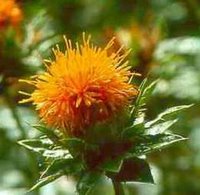 e Safflower in Chapter 22:Tamakazura: The Tendrill Wreath
e Safflower in Chapter 22:Tamakazura: The Tendrill Wreath